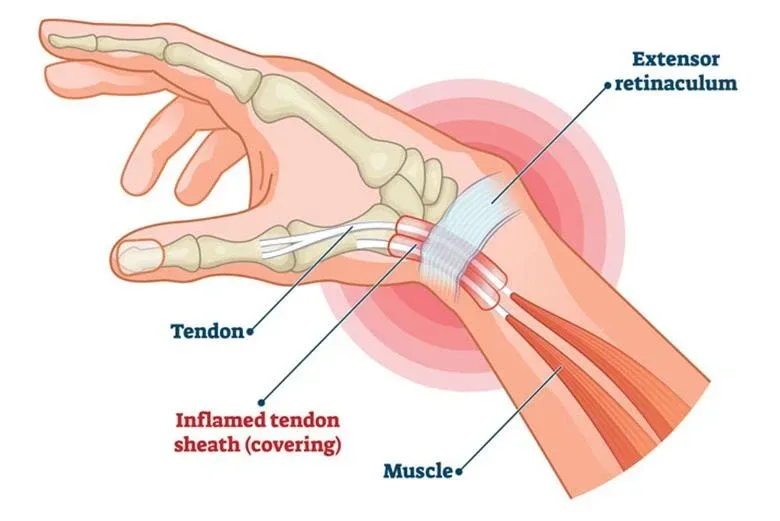
De Quervain’s Tenosynovitis is a painful condition that affects the tendons on the thumb side of the wrist. The condition causes the tendons and the sheath surrounding them to become inflamed, leading to pain and difficulty moving the thumb and wrist.
The condition is named after the Swiss surgeon Fritz de Quervain, who first described it in 1895. It is also known as De Quervain’s Tenosynovitis, De Quervain’s Disease, or Mother’s Wrist, as it commonly affects pregnant or young women.
The main symptoms of De Quervain’s Tenosynovitis include:
The pain may be mild at first but can gradually worsen over time. It may also spread up the forearm or down into the thumb.
The exact cause of De Quervain’s Tenosynovitis is unknown, but several factors can increase the risk of developing the condition. These include:
Diagnosis of De Quervain’s Tenosynovitis usually involves a physical examination of the hand and wrist. The physician may also ask about medical history and perform a Finkelstein test, which involves bending the thumb across the palm and then bending the wrist toward the little finger.
Treatment options for De Quervain’s Tenosynovitis may include:
Most people with De Quervain’s Tenosynovitis recover fully with proper treatment and rest. However, the condition can recur if the underlying cause is not addressed.